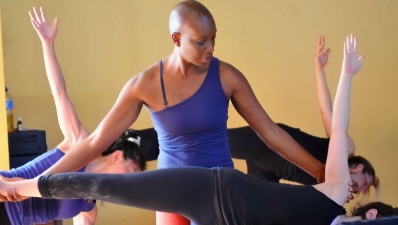Find a yoga teacher training that is going to teach you to deeply understand yourself and how to create a personal practice that will empower you to live to your fullest potential. Knowing yourself is the first step to being able to teach others.
I have been leading yoga teacher trainings and immersions for advanced yoga study for over 10 years and there are always questions that come up from dedicated students and potential teachers when they are ready to take the plunge into a yoga teacher training.
A training program is a large investment in time, money and energy and it can truly be one of the most transformative experiences of your life. Choosing the right yoga teacher training for you is a decision that should be weighed carefully.
Here my top ten tips on how to choose a yoga teacher training.
- Find a teacher training program that is led by a senior teacher who is steeped in daily practice and study. A teacher must first truly embody the teachings to be able to transmit them to you. Don’t be shy about asking your potential teacher trainer about their personal practice. If you are interested in teaching and living yoga as opposed to instructing a class this is an important distinction to make in choosing the person who will be guiding you through your yoga journey.
- Beware of being dazzled by arm balances and fancy poses as your marker of whom you should study with. Attend a few classes or workshops with the potential teachers on your list. Notice how they interact with students. Ask them if they have a teacher and who they have studied with. Do some research on the lineage of teachers that they come from.
- Try not to use convenience of location as the main factor in choosing your training program. I have seen many students choose a yoga teacher training program because it was right down the street from their house without knowing anything about the studio or the teachers teaching the program. If your favorite band was playing 20 miles away you would probably drive to see them. Make an effort to get to the best.
- Consider the type of student you are. Trainings have many different schedules: from weekend modules for 14 weeks or so, to once a month for a year, to 15 days in a row or even month-long trainings in beautiful retreat settings. What is the best type of learning environment for you? Will you get overwhelmed with learning too much information over a short period of time? Do you like to have more time to digest and practice what you have learned before moving on to something new? Do you want to incorporate your training with a vacation to Costa Rica, Bali or Nicaragua? There are many options to choose from, research them all and listen to your intuition about what would best serve you.
- Find a training that is going to teach you to deeply understand yourself and how to create a personal practice that will empower you to live to your fullest potential. Knowing yourself is the first step to being able to teach others. Make sure you know what topics are going to be covered in the training. Most studios have an information session, make sure you attend!
- If you have a special interest find the training that specializes in that type of study instead of generic yoga training. If you are interested in teaching prisoners go study with James Fox in his Prison Yoga Project. If you are interested in Yoga Therapy study with Gary Kraftsow or Larry Payne. If you are interested in Tantra study with Rod Stryker. Yin Yoga? You should find Paul Grilley ASAP. And if master teachers are not accessible to you find their senior teachers who live close to you and study with them.
- Make sure you know what topics are going to be covered in the training. Most studios have an information session, make sure you attend! If you really want to learn about the Chakra system make sure they are covering more than just the basics. Many studio’s will be bring in guest teachers to teach the portions of the training that they are masterful at like Ayurveda, Anatomy, Yin or Restorative. Look for trainings that bring in experts. It will give you a more well rounded experience.
- Don’t let money be a factor. Many studios will allow you to work as a karma yogi doing work around the studio or on social media to work off part or all of your training. Don’t be afraid to ask if you can set up a payment plan or do some karma hours in exchange for a discount.
- Start now! Get yourself started before your training even starts by reading a few books or watching a few online courses in your spare time. Reading books like The Heart of Yoga by T. K. V. Desikachar, The Secret of the Yoga Sutra’s by Pandit Rajmani Tiguanit, Yoga for Transformation by Gary Kraftsow or Yoga and Ayurveda by David Frawley . Watch Anatomy for Yoga with Paul Grilley or find online videos from the teachers you want to study with most.
- Use the same type of discernment that you would in choosing a doctor or nutritionist. Get referrals, do research, go to classes and mostly trust your gut.
- traceestanley's blog
- Log in or register to post comments


